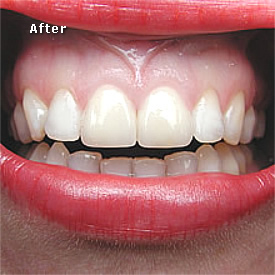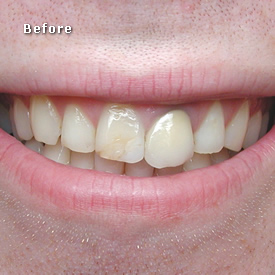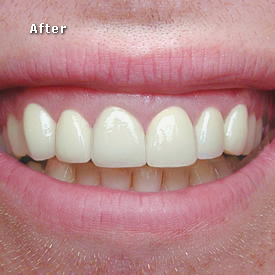Crowns
A crown or cap is a fabricated covering that encases the tooth entirely to the gum line. This procedure is undertaken to retain and strengthen a tooth in the following situations:
- when a tooth is broken or is extensively decayed.
- has a large failing filling.
- when a portion of tooth structure is missing following a root canal.
- to replace tooth structure lost due to excessive wear.
Crowns are generally of three types; all porcelain, gold and porcelain fused to gold.
Porcelain offers superlative esthetics and are consequently often placed on front teeth. They may not be the ideal choice for back teeth as they are often not strong enough to withstand chewing forces.
Gold crowns have for many years been the ideal choice for full coverage of back teeth. They can be fabricated to a very accurate fit and are strong enough to withstand biting forces without sustaining damage, resulting in long lasting and durable restorations. The similarities in wear rates between natural teeth and gold crowns make them very compatible and does not promote excessive wear of opposing teeth. However the metal color does not make it the most esthetic choice of crowns.
Porcelain fused to gold crowns offer a happy medium between gold and all porcelain crowns. They are made up of an inner shell of gold overlaid with an outer layer of porcelain that is fused to the metal. These crowns offer the esthetics of porcelain and the strength of metal. They are good choices for both front and back teeth.
The procedure for fabricating and placing a crown generally requires two appointments. At the first appointment, the tooth is numbed followed by the removal of any decay or rough edges and refinement of the tooth to create adequate room for the fit of the crown. An impression of the tooth is taken using impression putty. A temporary crown is provided to protect the tooth until the permanent crown is ready.
For porcelain crowns, a shade is selected that accurately matches the adjacent teeth. Plaster models created from the impression provide the dental technician with a replica of the tooth upon which the crown is fabricated and fitted. At the second appointment the temporary crown is removed, the permanent crown is tried to ensure proper fit and function following which it is permanently cemented in place.
Crowns remain one of the best techniques available to restore compromised teeth to full function, strength and esthetics. Their long life span allows them to be a cost effective method of enhancing and prolonging the retention of teeth resulting in a stable functional tooth restored to its original form.
Hours
9am - 6pm
Closed





